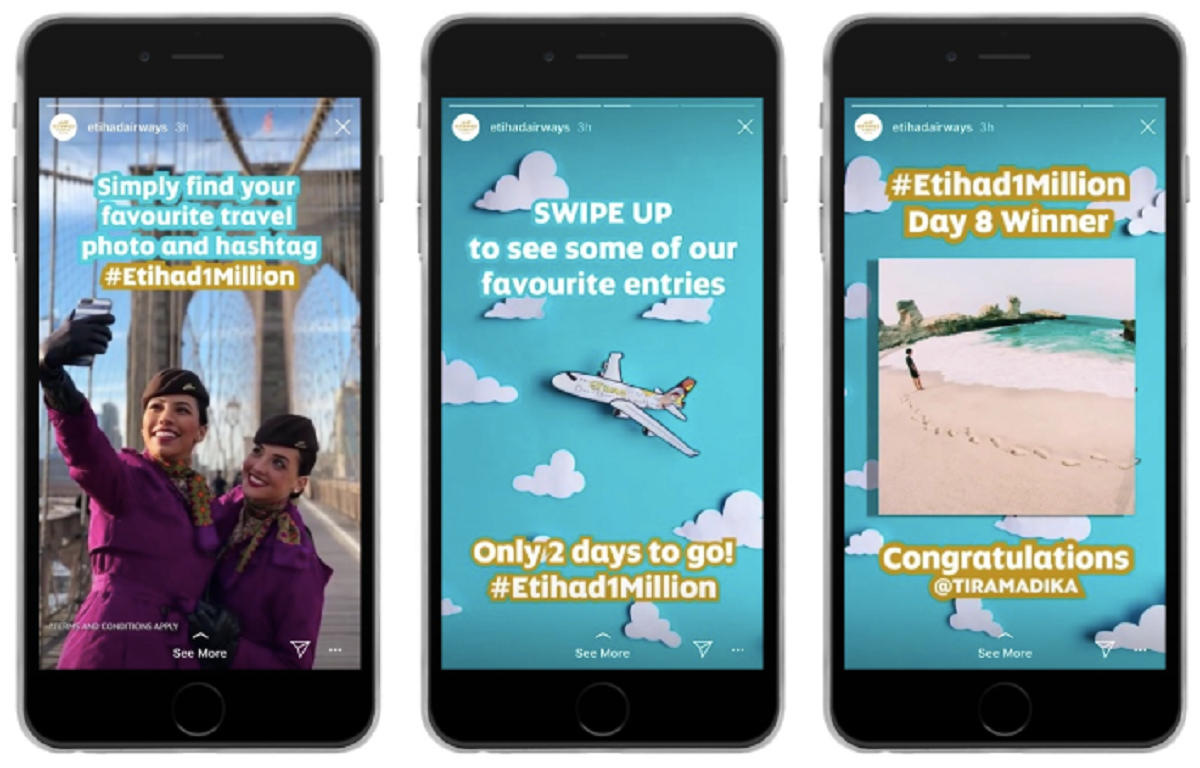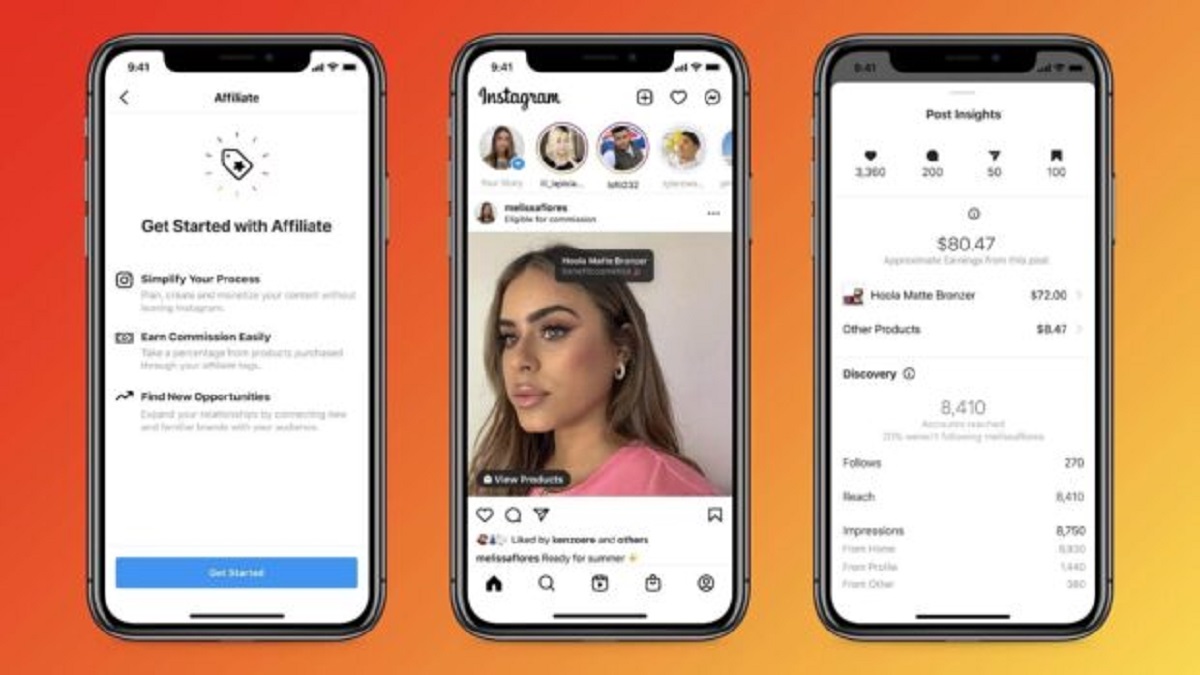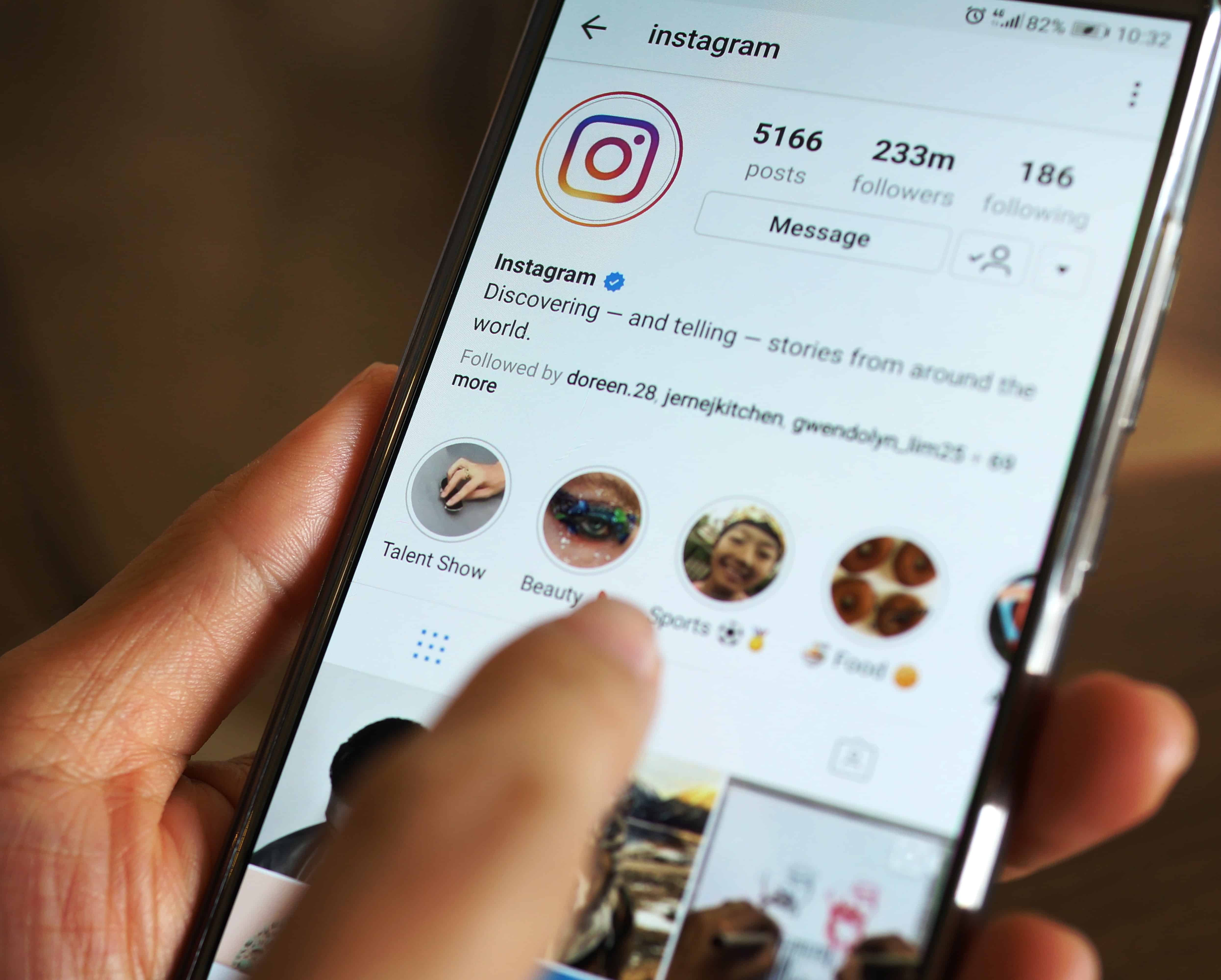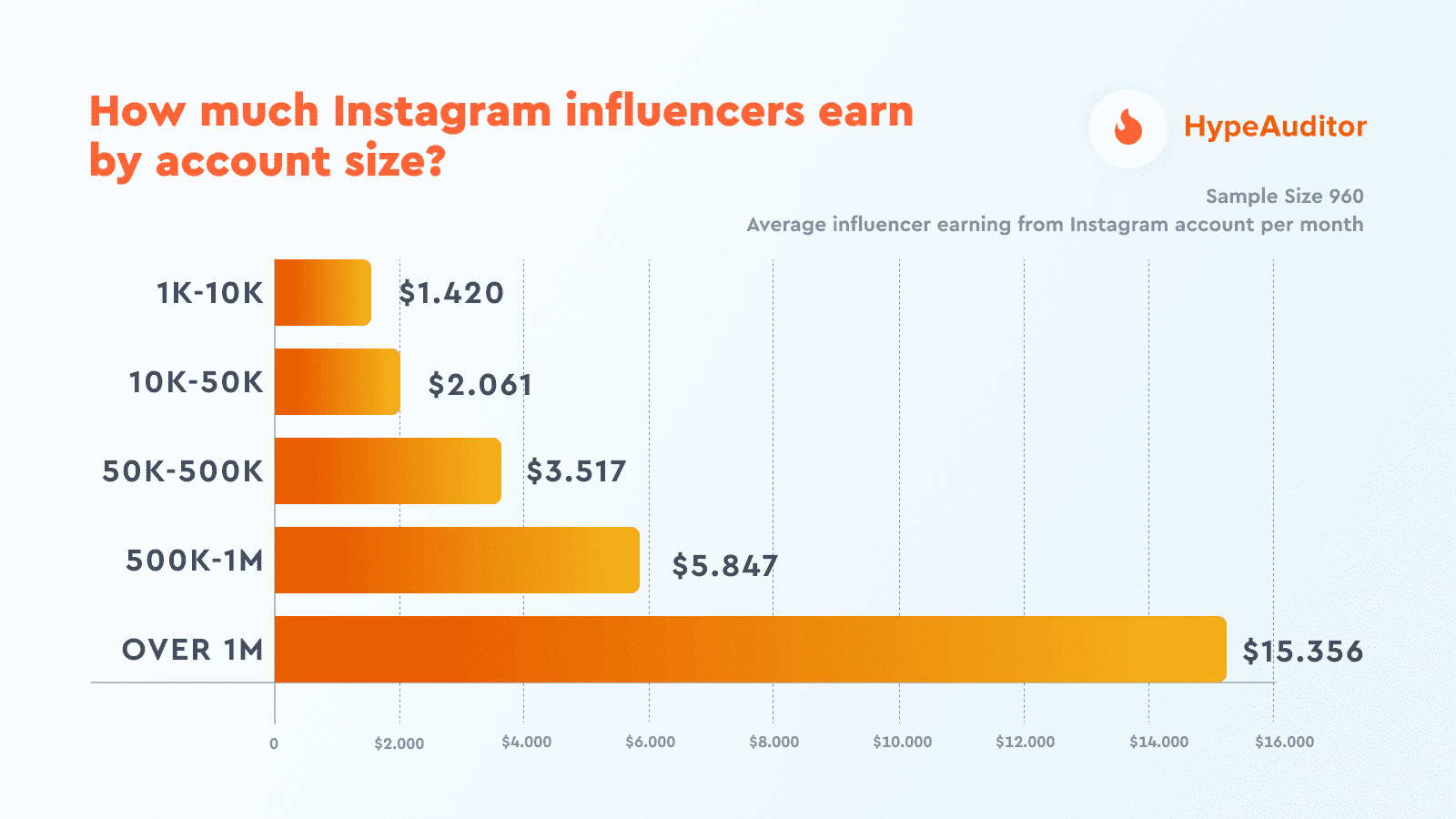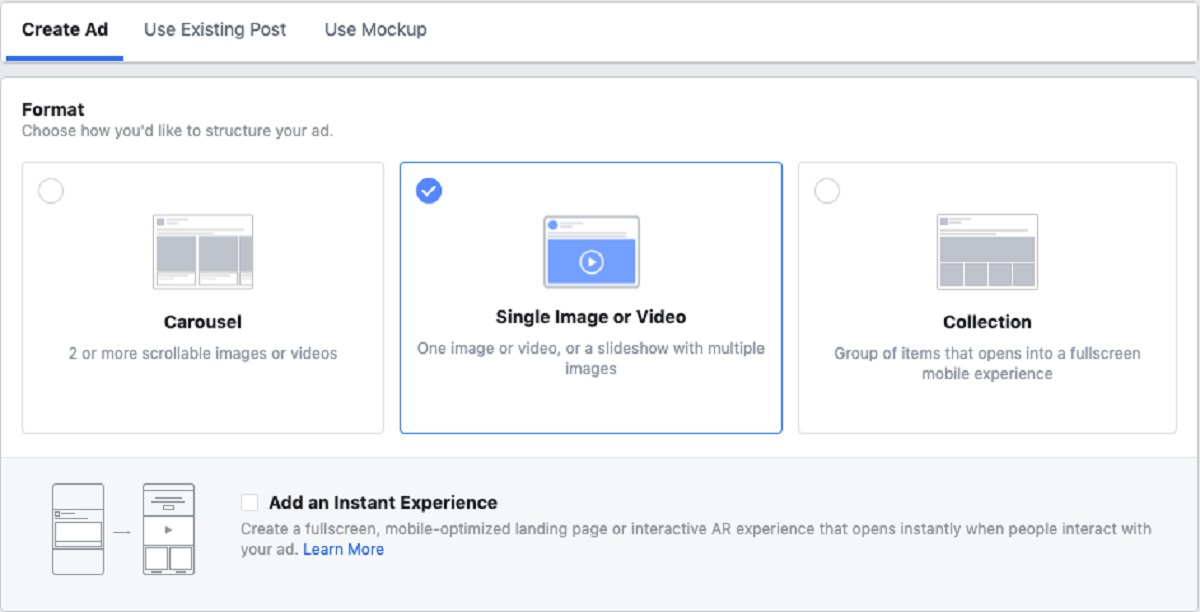Introduction
With over 1 billion active users, Instagram has become a powerful platform for businesses to connect with their target audience and promote their products or services. What was once a simple photo-sharing app has transformed into a thriving hub for influencers, brands, and consumers alike. As a result, running ads on Instagram has become an essential part of many businesses’ marketing strategies.
Instagram offers a visually appealing and highly engaging environment, making it an ideal platform to showcase your brand’s unique selling propositions. Whether you’re a small business looking to increase your reach or a large corporation aiming to boost conversion rates, Instagram ads provide a cost-effective way to reach a larger audience and drive meaningful results.
In this article, we will explore the benefits of running ads on Instagram and provide you with practical tips on how to set up and optimize your ads for maximum impact. From understanding the different types of Instagram ads to targeting your audience effectively and monitoring your ad performance, we’ve got you covered.
So, if you’re ready to take your Instagram marketing to the next level, read on to discover how you can leverage the power of Instagram ads to grow your business.
Why You Should Consider Running Ads on Instagram
Instagram has evolved into a highly influential platform that offers tremendous opportunities for businesses to reach and engage with their target audience. Here are some key reasons why you should consider running ads on Instagram:
- Large and Engaged User Base: With over 1 billion active users, Instagram provides a vast potential audience for your ads. Furthermore, Instagram users are highly engaged, with an average user spending 53 minutes per day on the platform. This means your ads have a greater chance of capturing the attention of your target audience.
- Visual Appeal: Instagram is all about visual content, making it perfect for showcasing your products or services. Whether it’s stunning lifestyle photos or captivating promotional videos, Instagram allows you to create eye-catching ads that resonate with your audience.
- Highly Targeted Advertising: Instagram’s powerful advertising tools enable you to precisely target your desired audience based on demographics, interests, behavior, and more. This level of targeting ensures that your ads are shown to the right people who are more likely to be interested in your offerings.
- Increase Brand Awareness: Running ads on Instagram can significantly boost your brand’s visibility and exposure. With sponsored posts appearing in users’ feeds and stories, your brand can get noticed by a wider audience, allowing you to increase brand recognition and awareness.
- Drive Traffic and Conversions: Instagram ads can be a powerful driver of website traffic and conversions. By strategically placing compelling call-to-action buttons and links in your ads, you can guide users directly to your website or landing page, increasing the chances of converting them into customers.
- Access to Instagram’s Ad Formats: Instagram offers a variety of ad formats, including photo ads, video ads, carousel ads, story ads, and more. Each format has its own strengths and can be tailored to suit your specific campaign goals and target audience, allowing for greater creativity and flexibility in your advertising strategy.
Overall, running ads on Instagram provides businesses with a unique opportunity to connect with a large and engaged audience, increase brand visibility, and drive tangible results. By harnessing the power of Instagram ads, you can effectively promote your products or services, reach new customers, and grow your business.
Setting up an Instagram Business Account
Before you can start running ads on Instagram, you need to ensure that you have an Instagram Business account. Here’s a step-by-step guide on how to set up your Instagram Business account:
- Download the Instagram App: If you don’t already have it, download the Instagram app from the App Store or Google Play Store. You can’t create a business account on the desktop version of Instagram.
- Create a New Account or Convert to Business: If you don’t have a personal Instagram account, you can create a new account by signing up with your email address or phone number. If you already have a personal account, you can convert it to a business account by going to your profile settings and selecting “Switch to Business Account.”
- Choose a Username and Profile Picture: Select a username that represents your business, is easily recognizable, and relates to your brand. Additionally, choose a high-quality profile picture that aligns with your brand identity.
- Add Business Information: Fill in your business name, category, contact details, and any other relevant information. This will help users understand what your business is about and how to get in touch with you.
- Connect to Facebook Page (Optional): If you have a Facebook Page for your business, you can link it to your Instagram Business account. This allows you to easily promote your Instagram content on Facebook and access additional advertising features.
- Optimize Your Profile: Craft a compelling and concise bio that showcases your brand’s unique value proposition. Include relevant keywords and a clear call-to-action. Additionally, add a link to your website or a specific landing page to drive traffic from your Instagram profile.
- Switch to a Business Profile: Once you’ve set up your account and optimized your profile, go to your profile settings and select “Switch to Business Account.” This will give you access to valuable insights about your followers and the performance of your posts.
Setting up an Instagram Business account is the foundation for running successful ads on the platform. It allows you to access various business features, such as Instagram Insights, advertising tools, and the ability to create sponsored posts. By following these steps, you’ll be one step closer to leveraging the full potential of Instagram to promote your business and connect with your audience.
Understanding Different Types of Instagram Ads
Instagram offers a range of ad formats to suit different campaign objectives and creative preferences. Understanding the different types of Instagram ads will help you choose the most suitable format to effectively reach your target audience. Here are the main types of Instagram ads:
- Photo Ads: These are simple yet engaging single-image ads that appear in the Instagram feed. Photo ads allow you to showcase your products or highlight your brand using visually compelling images. It’s important to choose high-quality, eye-catching images that align with your brand’s aesthetics and messaging.
- Video Ads: Video ads give you the opportunity to tell a more dynamic and captivating story. They can be up to 60 seconds long and autoplay in the Instagram feed. Use videos to demonstrate product features, share customer testimonials, or create engaging narratives that resonate with your audience. Make sure your videos are attention-grabbing from the first few seconds to capture viewers’ interest.
- Carousel Ads: Carousel ads allow you to showcase multiple images or videos within a single ad. Users can swipe through the carousel to view each image or video. Carousel ads are great for featuring a collection of products, highlighting different features of a single product, or telling a sequential story. Each image or video should have a clear and compelling message to encourage users to swipe through.
- Story Ads: Instagram Stories have become immensely popular, and story ads offer an effective way to reach a large and engaged audience. These full-screen ads appear in between organic stories and are highly immersive. Use creative visuals, compelling messages, and interactive elements like polls or swipe-up links to capture users’ attention and drive engagement.
- Explore Ads: Explore ads appear in the Explore section of the Instagram app, where users discover new content based on their interests. These ads can help you expand your reach and connect with users who may not be following your account yet. Ensure that your Explore ads are relevant to users’ interests, visually appealing, and provide value to encourage interaction.
These different types of Instagram ads offer varying opportunities to engage your audience, promote your products or services, and drive business results. Consider your campaign objectives, target audience, and the creative assets you have available when selecting the most appropriate ad format. Experiment with different formats to find what resonates best with your audience and yields the highest return on investment.
Creating Engaging Ad Content
When it comes to running ads on Instagram, creating engaging and compelling content is essential to capture the attention of your target audience. Here are some tips to help you create ad content that stands out:
- Know Your Audience: Understanding your target audience is crucial for creating relevant and appealing ad content. Research their demographics, interests, and pain points to tailor your messaging and imagery accordingly. Speak to their needs and aspirations to grab their attention.
- Use High-Quality Visuals: Instagram is a visual platform, and high-quality visuals are key to attracting attention. Use clear, vibrant, and visually appealing images or videos that align with your brand’s aesthetics. Professional photography or well-designed graphics can make a significant difference in the success of your ad content.
- Craft Compelling Copy: While visuals are essential, don’t neglect the power of compelling copy. Write concise and persuasive ad copy that highlights the key benefits of your products or services. Use clear and engaging language that resonates with your audience and compels them to take action.
- Include a Strong Call-to-Action: A strong call-to-action (CTA) is vital for driving desired actions from your audience. Use action-oriented verbs and create a sense of urgency or exclusivity. For example, “Shop Now,” “Learn More,” or “Limited Time Offer” can instill a sense of urgency and encourage users to take the next step.
- Create Focused Landing Pages: When users click on your ads, ensure that they are directed to relevant and optimized landing pages. Your landing pages should align with the messaging and offer highlighted in the ad and provide a seamless user experience. A clear and persuasive landing page will increase the chances of conversions.
- Experiment with Creativity: Instagram is a platform that encourages creativity and inspiration. Don’t be afraid to think outside the box and experiment with different ad formats, storytelling techniques, or interactive elements. Engage your audience with visually striking visuals, captivating narratives, or interactive features like polls or quizzes.
- A/B Testing: To optimize your ad content, perform A/B testing with different variations of visuals, copy, or CTAs. Test different elements to determine what resonates best with your audience and yields the highest engagement or conversion rates. Continuously analyze and refine your ad content based on the insights gained from testing.
By keeping these tips in mind, you can create ad content that captures attention, resonates with your audience, and drives meaningful engagement and results. Remember to stay creative, adaptable, and responsive to the preferences and behaviors of your target audience, and constantly evaluate and refine your ad content to maximize its impact.
Targeting your Ads Effectively
Targeting your ads effectively is crucial to ensure that they reach the right audience who are most likely to be interested in your products or services. Here are some key strategies to help you target your ads effectively on Instagram:
- Define Your Audience: Start by clearly defining your target audience. Consider factors such as demographics, interests, behaviors, and preferences. The more specific and detailed your audience definition, the better you can tailor your ads to their needs and preferences.
- Utilize Instagram’s Targeting Options: Instagram provides various targeting options to help you narrow down your audience. You can target based on demographics such as age, location, gender, and language. Additionally, you can target by interests, behaviors, and connections to specific accounts.
- Use Lookalike Audiences: Lookalike audiences allow you to reach new people who are similar to your existing customers or followers. By leveraging the data Instagram has on your current audience, you can expand your reach and target users who are more likely to be interested in your offerings.
- Retarget Website Visitors: Take advantage of the Facebook Pixel or Instagram’s tracking capabilities to retarget users who have previously visited your website. By showing ads to these users, you can remind them of your brand and entice them to take further action.
- Consider Custom Audiences: Custom audiences allow you to target specific groups of people based on your own customer data, such as email lists or phone numbers. This helps you reach existing customers or leads and tailor your ads specifically to them.
- Combine Targeting Options: Experiment with combining different targeting options to narrow down your audience further. For example, you can target females, aged 25-35, living in a specific location, who have an interest in fitness. By refining your targeting, you can ensure that your ads are reaching the most relevant audience.
- Monitor and Optimize: Continuously monitor the performance of your ads and make adjustments based on the results. Keep an eye on important metrics such as click-through rates, conversion rates, and engagement. If you notice that your ads are not performing as expected, refine your targeting or make changes to your ad content.
By effectively targeting your ads on Instagram, you can ensure that your message reaches the right people at the right time. Leveraging the available targeting options and continuously optimizing your campaigns will maximize the effectiveness of your ads and increase the chances of driving meaningful interactions and conversions.
Setting a Budget for Your Instagram Ads
Setting a budget for your Instagram ads is an important aspect of running a successful campaign. Here are some key considerations to help you determine an appropriate budget:
- Define Your Goals: Start by defining your campaign goals. Are you looking to increase brand awareness, drive website traffic, generate leads, or boost sales? Different goals may require different budget allocations, so it’s important to clarify your objectives upfront.
- Consider Your Ad Objectives: Instagram offers various ad objectives, such as reach, engagement, conversions, or video views. Each objective may have different cost implications, so choose the one that aligns with your goals and budget constraints.
- Conduct Market Research: Research your industry and competition to get an idea of the average costs associated with Instagram advertising. This can help you set a realistic budget and understand the level of investment required to achieve your desired results.
- Start Small and Test: If you’re new to Instagram advertising, it’s advisable to start with a smaller budget and test different ad variations. This allows you to gauge the effectiveness of your ads and make adjustments before scaling up your budget.
- Consider Cost Per Objective: Instagram provides insights into the estimated cost per objective based on your target audience and campaign settings. Use this information to estimate the cost of achieving your desired outcomes and adjust your budget accordingly.
- Monitor Performance and ROI: Keep a close eye on the performance of your ads and the return on investment (ROI) you’re generating. If you’re achieving your desired results within your budget, you can consider scaling up your budget to reach a larger audience or expand your campaign.
- Set a Daily or Lifetime Budget: Instagram allows you to set a daily budget or a lifetime budget for your ad campaigns. A daily budget specifies how much you’re willing to spend each day, while a lifetime budget determines the total amount you’re willing to spend throughout the entire duration of your campaign.
- Keep an Eye on Bidding Strategies: Instagram offers different bidding strategies, such as cost per click (CPC) or cost per thousand impressions (CPM). Understand the implications of each bidding strategy and choose the one that aligns with your goals and budget.
Remember, your budget should be flexible and adaptable. As you gain insights and understand what works best for your audience, you can adjust your budget allocation accordingly. Continuously monitor the performance of your ads and make data-driven decisions to optimize your budget and achieve the best possible outcomes for your Instagram ad campaigns.
Monitoring and Analyzing Your Ad Performance
Monitoring and analyzing the performance of your Instagram ads is crucial for understanding the effectiveness of your campaigns and making informed decisions to optimize your results. Here are some key steps to effectively monitor and analyze your ad performance:
- Define Key Performance Indicators (KPIs): Determine the KPIs that align with your campaign goals. These may include metrics such as click-through rates (CTR), conversion rates, engagement rates, ad reach, or return on ad spend (ROAS).
- Use Instagram Insights: Instagram provides in-depth analytics through its Insights feature, available on Instagram Business accounts. Use these insights to track and measure the performance of your ads, including impressions, reach, engagement, and follower growth.
- Track Conversion Metrics: If your campaign goal is to drive conversions, set up conversion tracking to measure the number of website visits, purchases, sign-ups, or other desired actions taken as a result of your ads. This can be done using website pixels or conversion tracking tags.
- Perform A/B Testing: Experiment with different variations of your ad creative, targeting, or call-to-action to compare performance and identify the most effective elements. By A/B testing your ads, you can uncover valuable insights and refine your campaigns accordingly.
- Track Engagement Metrics: Engagement metrics, such as likes, comments, shares, or saves, can provide valuable insights into the level of interest and interaction generated by your ads. Analyze these metrics to understand which ads are resonating well with your audience.
- Measure Cost-Effectiveness: Analyze the cost-per-result metrics, such as cost per click (CPC) or cost per conversion (CPA), to determine the cost-effectiveness of your campaigns. Compare these metrics against your desired KPIs to assess the efficiency of your ad spend.
- Monitor Ad Frequency: Keep an eye on the frequency of your ads to ensure that you’re not overwhelming your audience with repetitive content. High ad frequency can lead to ad fatigue and a decline in performance, so adjust your targeting or creative elements if needed.
- Reassess Audience Targeting: If you notice that your ads are not performing as expected, review your audience targeting settings. Consider adjusting demographics, interests, or behaviors to refine your targeting and reach a more receptive audience.
- Regularly Review and Optimize: Continuously review your ad performance data and make data-driven optimizations. Identify patterns, trends, or areas of improvement, and adjust your ads, targeting, or budget allocation to maximize your results.
By consistently monitoring and analyzing your ad performance, you can gain valuable insights into what’s working and what’s not. These insights will help you optimize your campaigns, make informed decisions, and ultimately drive better results from your Instagram ads.
Tips for Optimizing and Improving Your Instagram Ads
To maximize the effectiveness of your Instagram ads and achieve better results, it’s important to constantly optimize and improve your campaigns. Here are some helpful tips to optimize your Instagram ads:
- Create Compelling Visuals: Use high-quality and visually appealing images or videos that grab attention and align with your brand’s identity. Experiment with different formats and styles to find what resonates best with your audience.
- Write Persuasive and Action-Oriented Copy: Craft clear and concise ad copy that highlights the key benefits of your product or service. Use action-oriented language and compelling calls-to-action to drive users to take the desired action.
- Utilize Instagram Stories: Tap into the popularity of Instagram Stories by creating captivating and interactive ad content. Leverage features such as polls, quizzes, or swipe-up links to engage your audience and encourage them to take action.
- Optimize for Mobile: Instagram is primarily accessed through mobile devices, so make sure your ads are optimized for mobile viewing. Ensure that your visuals and text are clear and easy to read on smaller screens.
- Experiment with Ad Formats: Test different ad formats, such as photo ads, video ads, carousel ads, or story ads, to see which resonates best with your target audience. Varying your ad formats can help keep your campaigns fresh and engaging.
- Refine Your Targeting: Continuously analyze your targeting parameters to ensure you’re reaching the right audience. Refine your demographics, interests, or behaviors to hone in on the most relevant and receptive users.
- Perform A/B Testing: Test different variations of your ads, including visuals, copy, calls-to-action, or targeting options, to identify the most effective combinations. A/B testing allows you to gather data-driven insights and optimize your campaigns accordingly.
- Monitor Ad Performance: Keep a close eye on the performance of your ads and analyze key metrics such as reach, engagement, conversion rates, or click-through rates. Use this data to identify areas for improvement and make data-driven decisions.
- Optimize Landing Pages: Ensure that your landing pages are aligned with your ad content and provide a seamless user experience. Optimize your landing pages for quick loading times, clear messaging, and easy navigation to increase conversions.
- Track and Leverage Insights: Use the analytics and insights provided by Instagram to understand the behavior and preferences of your audience. Identify patterns, trends, or opportunities to refine your targeting and content strategies.
Remember that optimization is an ongoing process. Continuously test, analyze, and optimize your Instagram ads based on the insights and feedback you gather. By incorporating these tips into your strategy, you can enhance the performance of your ads, reach a wider audience, and achieve better results.
Conclusion
Running ads on Instagram can significantly boost your brand visibility, engagement, and drive meaningful results for your business. By leveraging the platform’s large and engaged user base, visually appealing environment, and powerful advertising tools, you can effectively reach and connect with your target audience.
Throughout this article, we have explored various aspects of running successful Instagram ads. We discussed the importance of setting up an Instagram Business account, understanding different types of Instagram ads, and creating engaging ad content. Additionally, we delved into targeting strategies, budgeting considerations, and the significance of monitoring and analyzing ad performance.
To optimize and improve your Instagram ads, consider implementing the following tips: create compelling visuals and persuasive ad copy, leverage Instagram Stories, optimize for mobile, experiment with different ad formats, refine your targeting, perform A/B testing, monitor ad performance, optimize landing pages, and track and leverage insights. By continuously refining and adapting your ad strategy based on data and insights, you can maximize the effectiveness of your campaigns and achieve better results.
Remember, running successful Instagram ads requires a combination of creativity, strategy, and analysis. Stay up-to-date with industry trends and platform updates, test innovative ideas, and stay flexible in your approach. As you hone your Instagram advertising skills, you will be able to tap into the power of this platform to enhance your brand’s visibility, engage with your audience, and drive tangible business growth.









